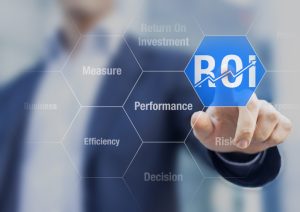Guidelines for Estimating the Payback of a Demand Forecasting Solution
 Most companies that make the decision to move to an automated demand forecasting solution are primarily driven by:
Most companies that make the decision to move to an automated demand forecasting solution are primarily driven by:
- Obvious forecast accuracy challenges
- Highly variable process that requires too much local knowledge of the company’s products – loss of a knowledge worker
- Lack of time and knowledge to produce the detail level forecasts required to support a more efficient manufacturing or distribution system
- Downstream inventory problems that are clearly driven by forecasting problems
- An attempt to drive more cooperation and ownership between sales and operations through a consensus-based forecast
In this post, I’ll describe what you should expect to pay when making an automated forecasting solution investment. And I’ll offer up some general guidelines for estimating the ROI and payback from bringing such a solution onboard in a manufacturing or distribution business.
THE COSTS
Demand Forecasting solutions include both Software and Consulting Services.
- Demand Forecasting Software – consists of a tightly integrated statistical forecasting engine that models forecasts using valid values in the demand data repository. Once models are created by the forecast server the detailed results are stored back into the repository. Everything in the system should be user customizable.
- Typical software costs (assuming data repository has already been licensed) are $15K to $30K for the forecast server and any additional user seat costs associated with the base system.
- Demand Forecasting Consulting services – consists of not only the technical implementation, configuration and education of the software itself but the project design, as well. This design should reflect best practices for process changes, process management and forecasting methodologies. Additionally, the forecasting process often extends pass the statistical modeling to include collaboration to form the basis of a Sales and Operation Planning process.
- Typical Consulting Service costs range from $20K to $50K depending on the collaborative process.
THE BENEFITS
The benefits derived from an automated Demand Forecasting solution can be realized in both soft and hard cost savings, as well as overall process improvements.
Hard cost savings
- Downstream finished goods inventory reduction from forecast accuracy improvements alone would include a one-time savings from the decrease in inventory as well as a recurring savings of the carrying cost of the reduced inventory. Estimates range depending on your company type.
- In a pure make-to-stock or distribution company, the downstream inventory reduction could range from 10% to 20% since forecasting inaccuracies typically drive around 75% of the required safety stock.
- In a hybrid company (part make-to-stock and part make-to-order), the downstream inventory reduction could range from 5% to 10%.
- In a pure make-to-order company, the collaborative component of the automated Demand Forecasting system drives nearly all the savings in a range from 1% to 5%.
- Customer service improvements (improved fill rates and on-time deliveries) would create hard savings if your company has service level contracts for supplying your customers. Cost savings estimates are difficult to estimate without specific internal company data.
Soft or indirect cost savings
- Forecast process automation will reduce the time spent on creating and managing the overall forecast process but rarely results in a hard labor cost savings due to redeployment.
- Operational efficiency gains from planning and scheduling improvements driven by a more accurate, dependable and sometimes more detailed forecast.
- More predictable financial planning resulting from a more accurate forecast as well as consensus planning driven by the collaborative process changes.
- Raw material management savings generated by a more accurate upstream finished goods forecast can be significant. Material procurement practices and supply chain planning can be substantially improved. Raw material inventory reductions and the associated inventory carrying costs can be a fraction of the finished goods inventory savings, depending upon how much the manufacturing process adds value to the finished product.
If pure forecast accuracy improvement from a demand forecasting engine is expected to drive most of the cost savings and determine the ROI and payback period, then an upfront overview analysis may need to be done to estimate the accuracy improvement.
While these benefits are sometimes difficult to estimate upfront of the solution implementation, in all cases the results will be very positive downstream for the business itself.